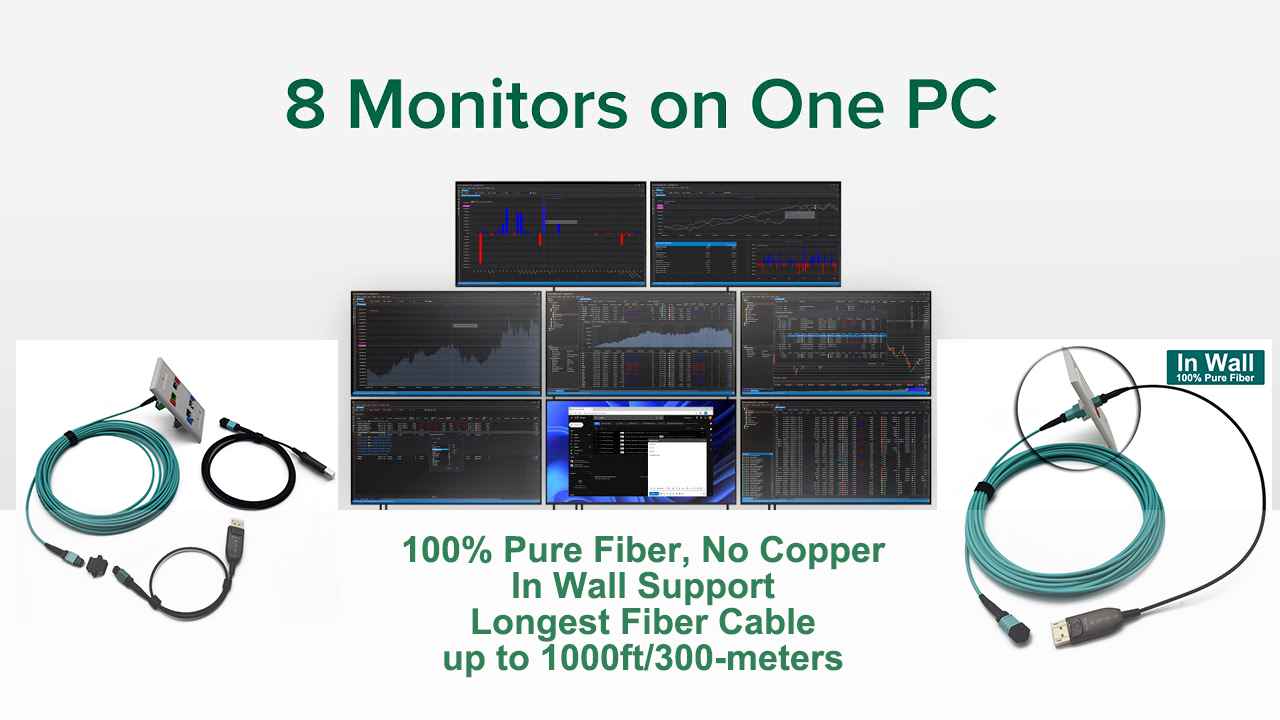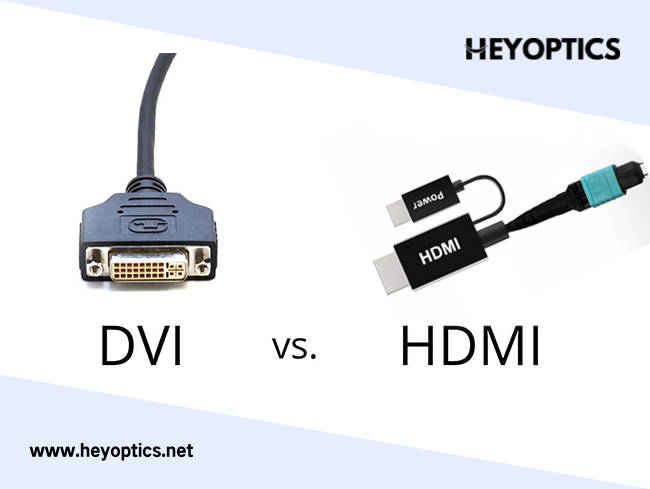Are All fiber optic HDMI Cables the Same?
There seem to be tons of HDMI cables on the market, but is one that much different from the other? If you've connected anything to a monitor in the past decade, chances are you've used HDMI cables before.
In case you didn't know, all HDMI cable standards are not the same. Using the wrong version can degrade your audio and video experience.
HDMI cable standards
- 1.4 is 10Gbps and for 1080p or lower – not for 4K.
- ‘High Speed’ can be pushed to 4K@30Hz with lossy compression. If you want to play Blu-Ray or Dolby Atmos content, forget these.
- 2.0 Premium High Speed’ 18Gbps for 4K@60Hz – supports Dolby Vision and Dolby Atmos with some compression, a good all-rounder
- 2.1 ‘Ultra-High-Speed’ 48Gbps, 4K@120Hz and 8K with no compression. Backwards compatible and what you should buy.
- 2.1a yet to be ratified
HDMI 2.1 Features
| HDMI 2.1 Feature | Benefit |
| Increased Bandwidth | Adds support for 4K, 5K, 8K, 10K resolutions at 120 Hz. |
| Auto Low Latency Mode | Enables ideal latency setting to be set automatically. Allows smooth lag-free and uninterrupted viewing and interactivity. |
| Dynamic HDR | Lets a display alter the HDR metadata on a scene by scene or frame by frame basis. |
| Variable Refresh Rate | Eliminates stuttering and frame tearing in games. |
| Enhanced Audio Return Channel | Improves support of Dolby Atmos and DTS:X audio standards. |
| Quick Media Switching | Decreases the delay when switching video sources. |
| Quick Frame Transport | Reduces latency for smoother gaming without lag and real-time interactive VR. |
If you are buying a new TV treat yourself to ULtra-High-Speed HDMI cables.
If you can’t find any marking on the HDMI cable (either the plug or the cable itself), you can be sure it won’t transmit 4K properly. The best idea is to throw these away – they are useless in a 4K world.
It is not just the cable but also about what you connect to it – the TV, soundbar and more. These have HDMI ports, but if you plug a version 1.4 cable into a Version 2.1 port, you will get 720/1080p transfer rates.
If you have a Dolby Vision/Dolby Atmos 4/8K TV, soundbar, Xbox X, PS5 or some higher-end streaming devices, you need HDMI 2.1 Ultra-high-speed 48Gbps cables.
Qualities of HDMI Cables
You might not always notice the difference between a cheap 6 ft HDMI cable and an expensive one, but there are still varying qualities that you should know when looking. If you get a very cheap cable, it can have a higher chance of breaking, having signal loss/interference, or other issues.
When buying an HDMI cable, you should buy one that has EMI (Electromagnetic interference) shielding, high-quality insulation in the cable, and a robust connector. While not all cables will advertise these qualities, it's good to keep these in mind. If it's a cheap cable, it's less likely to have higher-quality components.
HDMI cable for 4K, Dolby Vision, Dolby Atmos or more
Higher video resolutions, including 8K@60Hz and 4K@120Hz for immersive viewing and smooth fast-action detail. Fiber 4k hdmi cable for home theater.
Dynamic HDR (HDR10/+, Dolby Vision/IQ) ensures every moment of a video is at its ideal values for depth, detail, brightness, contrast and wider colour gamut—on a scene-by-scene or even a frame-by-frame basis. 48G bandwidth for uncompressed HDMI 2.1 feature support. It is backwards compatible, but HDMI 2.0 or earlier cables are not forwards compatible.
HDMI 2.1 eARC simplifies connectivity, provides greater ease of use, supports the most audio formats and highest audio quality (high-bitrate audio formats include DTS Master, DTS:X, Dolby TrueHD, Dolby Atmos and more). It ensures full compatibility between audio devices and upcoming products.
- FRL (Fixed Rate Link) is a signalling technology supported only in HDMI 2.1. It is necessary to achieve higher uncompressed resolutions such as those above 4K@60Hz and the ultra-high-speed bandwidths up to 48Gbps.
- Enhanced gaming features ensure an added level of smooth and seamless motion and transitions for gaming, movies and video.
- Variable Refresh Rate (VRR) reduces or eliminates lag, stutter and frame tearing for more fluid and better detailed gameplay.
- Auto Low Latency Mode (ALLM) allows the ideal latency setting for smooth, lag-free and uninterrupted viewing and interactivity
- Quick Frame Transport (QFT) reduces latency for smoother no-lag gaming and real-time interactive virtual reality.
- Quick Media Switching (QMS) for movies and video eliminates the delay resulting in blank screens before content shows.
- HDMI Cable Power enables active HDMI Cables to get power from the HDMI Connector without attaching a separate power cable. This makes connecting and using active HDMI Cables as easy as passive wired HDMI Cables.
Which HDMI cable type should I use?
Since HDMI 2.1 is backward compatible with older HDMI versions, it's best to buy an HDMI 2.1 cable for the future. You'll be sure to get the most out of your monitor without worrying about which one to buy. Devices that support eARC also require HDMI 2.1 to provide better audio for sound bars and audio receivers. If you want to make it easier, here are my recommended fiber hdmi HDMI 2.1 cables.
8k HDMI Fiber Optic Cable Application
Pure Fiber Ultra High Speed 48Gbps 8K 60Hz HDMI 2.1 Optical Cable
Pure Fiber Ultra High Speed 48Gbps 8K60 HDMI 2.1 Armored Fiber Optical Cable

DisplayPort 1.4 Application
8K DisplayPort 1.4 over Pure Fiber MPO OM3 Fiber Optical Cable
Armored Fiber 8K DisplayPort 1.4 over Pure Fiber MPO OM3 Fiber Optical Cable




